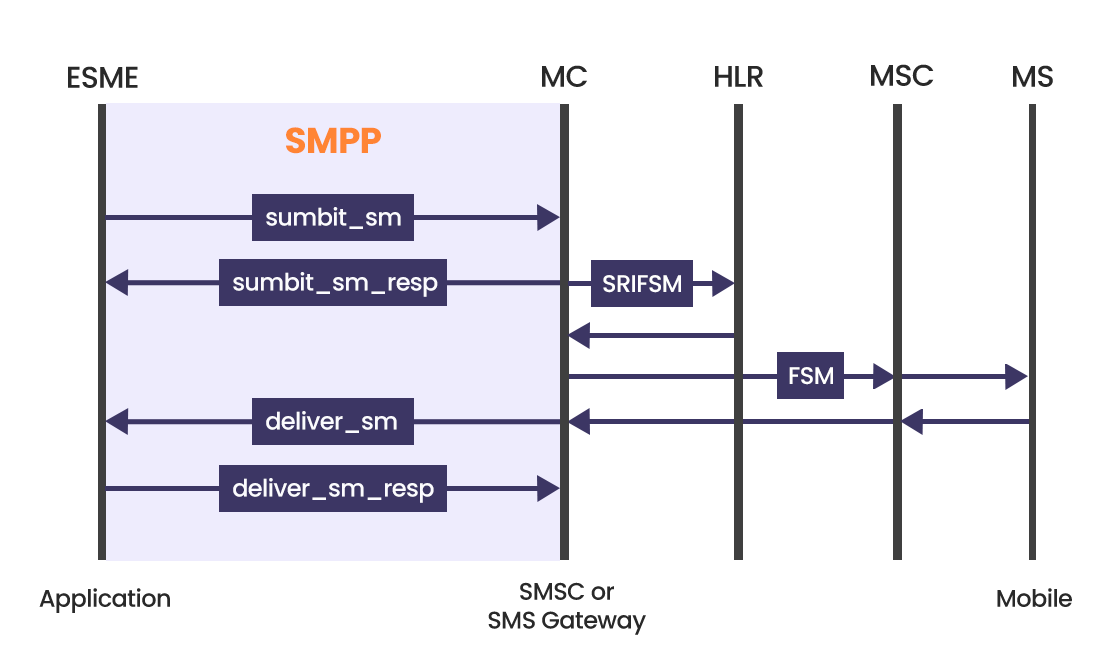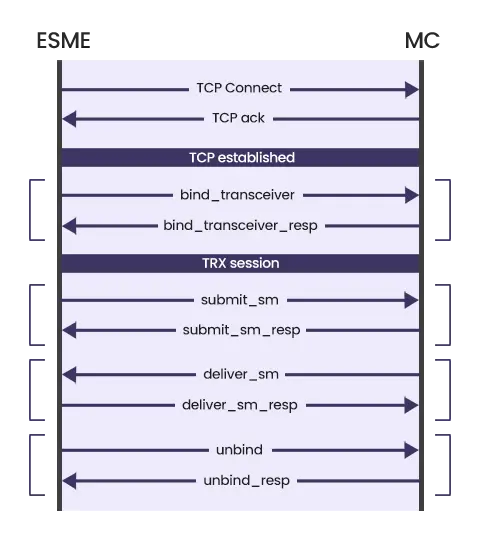Get a Free WhatsApp Business Account – Includes Onboarding, API Access & Sandbox. Apply Now!
Get a Free WhatsApp Business Account – Includes Onboarding, API Access & Sandbox. Apply Now!
SMPP stands for Short Message Peer-to-Peer. SMPP protocol used in the telecommunications industry to exchange short text messages between different entities, typically for applications like SMS messaging and other messaging services. SMPP server is widely used for sending and receiving SMS messages, especially in bulk messaging applications, such as those used by mobile network operators, service providers, and messaging aggregators.
The SMPP protocol operates on a client-server model, where the client (usually an application or service) communicates with a server (typically provided by a mobile network operator or messaging service provider) to send or receive SMS messages. It provides a standardized way for applications to interact with the messaging infrastructure of cellular networks.
SMPP SMS Gateway defines a set of commands and responses that allow the client and server to exchange messages, manage message delivery, handle errors, and perform various administrative functions related to SMS messaging. It operates over TCP/IP connections, making it suitable for communication over the internet.

Client Application: This is the application that wants to send or receive SMS messages using the SMPP protocol. It could be a messaging service, an application within a mobile device, or any other entity that needs to interact with a messaging infrastructure.
SMPP Server: The server provides the interface between the client application and the telecommunication network. It handles the incoming requests from clients, processes them, and forwards them to the appropriate destinations.
TCP/IP Connection: The communication between the client application and the SMPP server occurs over a TCP/IP connection. This connection is established before any SMPP messages are exchanged.
Bind: The client initiates a bind request to establish a connection with the SMPP server. There are different types of blinds, such as:
Message Exchange: Once the bind is established, the client and server can exchange various SMPP commands and responses:
Delivery Reports: The SMPP server can provide delivery reports to the client application, indicating whether a sent message was successfully delivered to the recipient's handset.
Error Handling: SMPP gateway includes mechanisms for error reporting and handling, ensuring that both the client and server can deal with issues that might arise during message transmission.
Unbind and Disconnect: When the communication session is complete, either the client or server can initiate an unbind request, which terminates the SMPP session, and the TCP/IP connection can be closed.

| Aspect | SMS API | SMPP |
|---|---|---|
| Use Case | Integrate SMS into applications, websites, etc. | High-volume messaging for carriers and service providers |
| Audience | Developers, businesses | Telecommunication carriers, providers, large businesses |
| Complexity | Easy to use, often RESTful APIs or SDKs | More complex, requires knowledge of protocol like kennels |
| Direct Communication | Often uses third-party API | Direct communication with SMSC |
| Features | Advanced features like personalization, groups, interfaces | Core SMS functionality, may lack some features |
| Scalability | Suitable for SMEs, large | Ideal for high-volume messaging |
| Authentication | API keys, tokens, parameters | Credentials provided by SMSC |
| Delivery Reports | Often available | Detailed repose reports |
| Implementation | HTTP requests with parameters | Direct interaction with SMSC using SMPP protocol |
| Examples | SMS service Gateways, White label aggregators. | Used by telecommunication companies and providers |
Regardless of one or million messages you send, our SMS infrastructure will ensure you that they deliver on time.
Utilization based pricing enables you to get discounted pricing from the beginning while only paying for what you use.
We connect your messaging flow directly over 220+ carriers in 200+ countries for international delivery that is best in class.
We align you with the support and developer team. We ensure that your Authkey.io experience is smooth and successful.